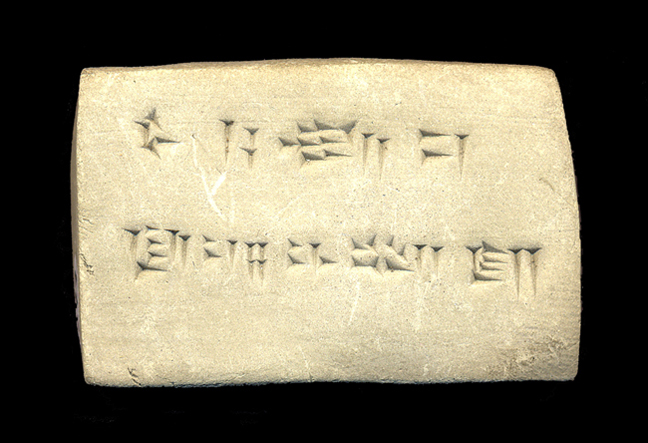
This small clay tablet is impressed with a series of wedge shaped marks known as cuneiform. Cuneiform was a method of writing that dates as far back as the fourth millennium BC. Developed by the Sumerians in southern Mesopotamia (present day Iraq), cuneiform was adopted by ancient Akkadian, Babylonian, Assyrian and Persian cultures before falling out of use around the sixth century BC.
Exactly what this tablet said was a mystery to NPS staff for many years. It was not until a scholar familiar with Babylonian cuneiform visited the Longfellow House –Washington's Headquarters NHS in 2005 that the mystery was solved. The script, when sounded out, reads "A-LI-IS LU-UN-PI-IL-LU", a phonetic approximation of the name Alice Longfellow!
It is not known when or where Alice Longfellow acquired the tablet with her name written out in a script that was used thousands of years ago. It might have been done for her by a visiting scholar, or during a visit to an institution with a collection of ancient Near East artifacts, such as the Museum of Fine Arts, Boston.
